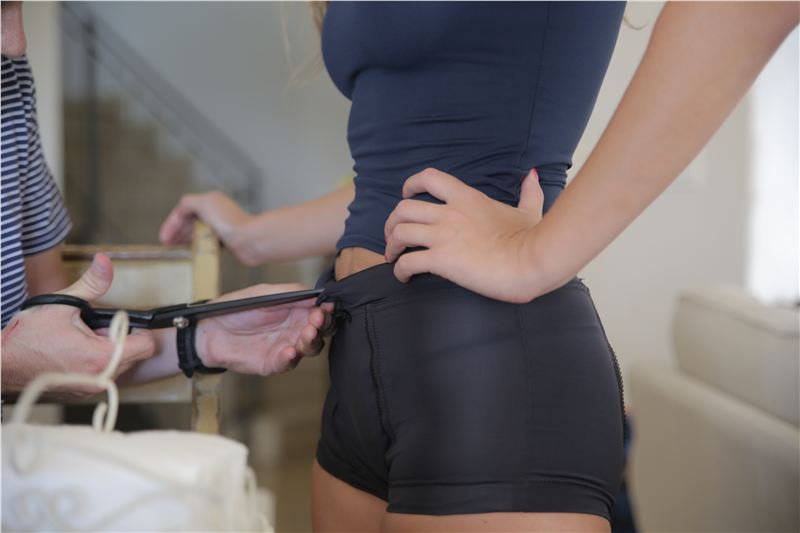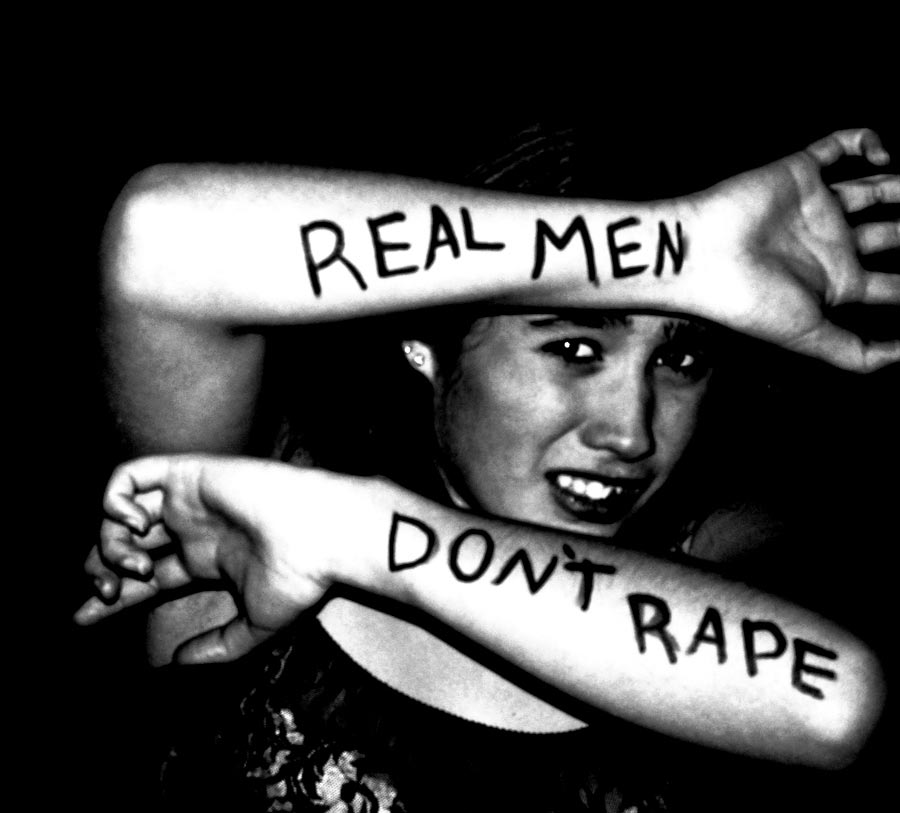by Anne Theriault
There is currently an Indiegogo campaign created by AR Wear for a line that they call Anti-Rape Clothing. These garments, which include a pair of boy-cut brief-style panties, running shorts, leggings and “travelling shorts,” are allegedly designed and built to be unremovable except by the owner, who has some sort of key to release the locking mechanism on the waistband. Basically they act as a chastity belt, although of course we are not supposed to think of them as chastity belts. AR Wear wants us to believe that this is some sort of modern innovation, and not just a contemporary twist on an outdated garment meant to oppress and subjugate women. In fact, AR Wear wants us to believe that the opposite is true — that their anti-rape wear will actually empower women and offer them some sort of freedom that they might have been lacking.
Let’s get a few things straight:
Perpetuating the myth that rape is preventable or avoidable is not empowering.
Giving society one more reason to blame rape victims for their rape is not empowering.
Continuing to embrace the idea that rape has something to do with what kind of clothing you are wearing (or not wearing) is not empowering.
Nothing about this product is empowering, except maybe for rapists.
There is already a long list of things that women shouldn’t do if they don’t want to be raped — they shouldn’t wear revealing clothing, shouldn’t go out at night alone, shouldn’t drink, shouldn’t talk to strangers, shouldn’t trust men, any men, not even men they know. Really, the end game of all anti-rape advice is that women should stay at home, alone, in a locked house, but even that scheme isn’t 100 per cent foolproof.There is no actual way for a woman to prevent being raped.
And yes, I’ve heard all the rhetoric about mitigating risks and being more careful, most of which boils down to telling women not to do one or all of the things listed above. One analogy that people often use is the seatbelt metaphor — that you wouldn’t drive without wearing a seatbelt, even if you are a good driver. The idea is that we all make choices every day to make our lives safer, and telling women not to indulge in risky behaviour like wearing a cute dress or going for a run alone is no different than telling someone to put on their seatbelt when they get in their car.
Except that car accidents are accidents. People don’t rear-end you on purpose. You don’t drive into a fence on purpose. You don’t skid off the road on purpose. These are things that happen by accident. Rape is not in any way comparable to a car crash. Rape is a violent crime committed by a rapist. Rape is done with the intention to rape.
I feel like I shouldn’t even have to say this, but I’ll say it anyway:
Rape is not an accident that happens to you because you didn’t take enough precautions or because you weren’t paying close enough attention. Rape is a deliberate choice for violence and harm made by another person.

AR Wear’s Anti-Rape clothing does little more than offer society one more reason to blame rape victims for their rape. It gives people the chance to say, “Well, if only she’d been wearing those special panties, this wouldn’t have happened.” This falls in line with the same old victim-blaming mentality of, “If only she’d been dressed differently, if only she hadn’t been drinking, if only she’d screamed or kicked or fought harder.” It’s all part of the same culture that still puts the responsibility on women not to be raped. It’s the same culture that says, “Of course rape is wrong, and of course what he did was terrible, but.”
There should never, ever be a but.
It also bears mentioning that idea behind this clothing operates off the assumption that most rapists are strangers, who attack women in dark alleys late at night, when actually the opposite is true — most rapists are acquaintances with, or even romantic partners of, the victim. So what would happen if a woman did have AR Wear’s Anti-Rape clothing on, removed said clothing of her own volition, and then was raped? It would be so unbelievably easy for a judge to rule that it couldn’t possibly have been rape, because the victim chose to take off her own protective clothing.
And what happens if a would-be rapist becomes frustrated trying to remove the Anti-Rape panties? Doesn’t it seem likely that rather than stopping a rapist cold, it might incite them to other forms of violence?
This clothing does not make women less vulnerable to the threat of rape. Not really. It just seeks to make a profit off of a deep and very legitimate fear that almost every woman has. And the reality of the situation is that this product does not, as the Indiegogo campaign claims, give women “more power to control the outcome of a sexual assault.” It is unbelievably damaging and ignorant to say that victims of sexual assault could have had more power to control the outcome of what happened to them. This is victim-blaming, pure and simple.
The only person who has the power to control the outcome of rape is the rapist.
The only person who can prevent rape is the rapist.
The only person responsible for rape is the rapist.
I don’t know how many more times this has to be said until it is properly understood.
Anne Theriault is a feminist blogger. She tweets from @anne_theriault. This article was first published on HuffPost.
Opinions expressed in this article are solely those of the author.







